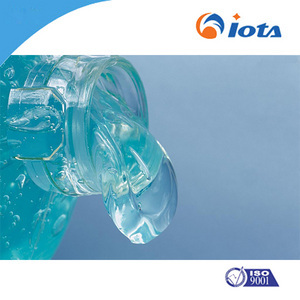Hits: 628 img
Hydrogen-containing MQ resin, as a type of MQ silicone resin, possesses a unique chemical structure and performance advantages, and has demonstrated broad application prospects in multiple fields in recent years. The following is an overview of the development status and prospects of hydrogen-containing MQ resin.

Development Status
Hydrogen-containing MQ resin typically consists of tetrafunctional Si-O units and hydrogen-containing monofunctional Si-O units. This special structure endows it with excellent cross-linking properties, heat resistance, and mechanical performance. Currently, the preparation technology for hydrogen-containing MQ resin is relatively mature, with the sol-gel method being a primary preparation approach. Among these, the tetraethoxysilane method is particularly favored for its ability to produce high-performance products, despite its relatively high production costs.
In terms of applications, hydrogen-containing MQ resin is primarily used as a reinforcing material for liquid silicone rubber. Compared with traditional reinforcing fillers such as fumed silica, it significantly improves product transparency and reduces viscosity, making it highly suitable for products with high transparency requirements. Furthermore, hydrogen-containing MQ resin plays a crucial role in the synthesis of other silicone materials, such as silicone pressure-sensitive adhesives and transparent silicone gels.
Prospects
With the widespread application of high-performance silicone materials in electronics, photovoltaics, and mother and baby products, the demand for silicone materials with high transparency and mechanical properties is increasing annually. As a key raw material in these fields, the market demand for hydrogen-containing MQ resin will continue to grow. Especially in the electronics and electrical industry, with the continuous advancement of integrated circuit packaging technology, the requirements for packaging materials are becoming increasingly stringent. Hydrogen-containing MQ resin, due to its excellent properties, is expected to become one of the mainstream packaging materials.
In addition, with the increasing awareness of environmental protection and the development of green chemistry, the environmentally friendly preparation technologies and applications of hydrogen-containing MQ resin will also be further promoted. By improving preparation processes and reducing production costs, the competitiveness of hydrogen-containing MQ resin will continue to enhance, and its market share is expected to expand further.
In summary, hydrogen-containing MQ resin has broad development prospects and enormous market potential. In the future, with the continuous advancement of technology and the continuous expansion of application fields, hydrogen-containing MQ resin will become an important force in the silicone material industry.
More details please click here.